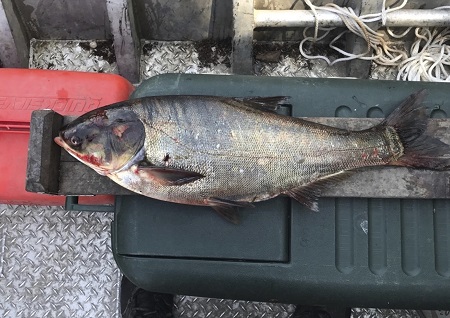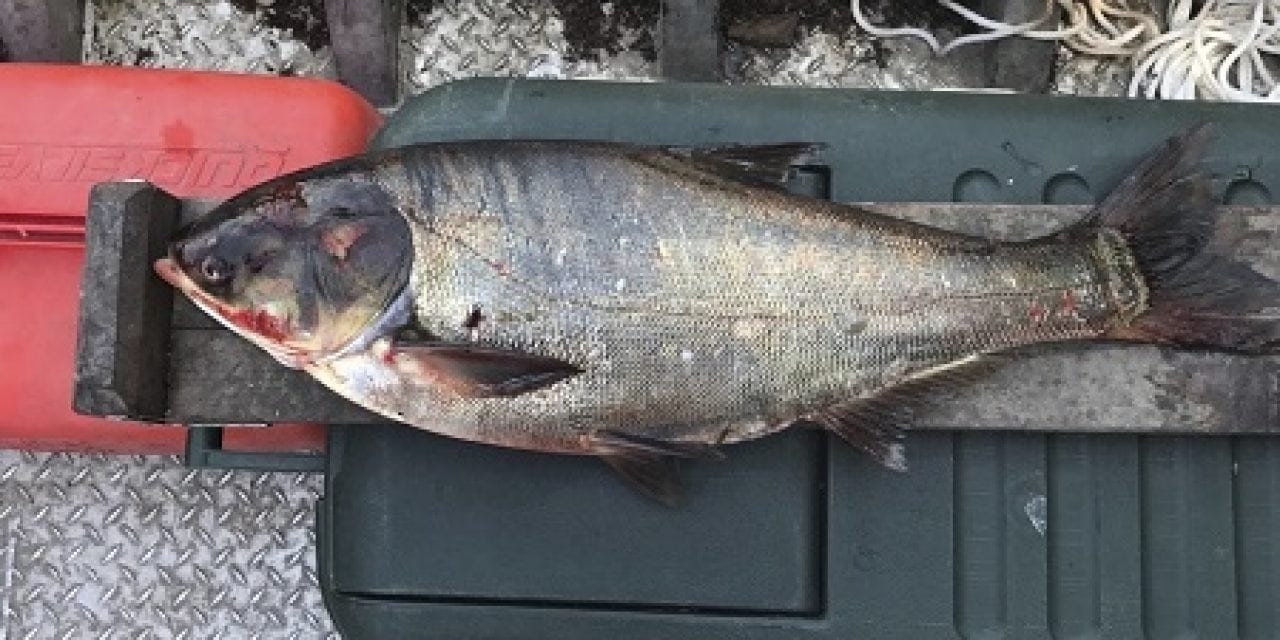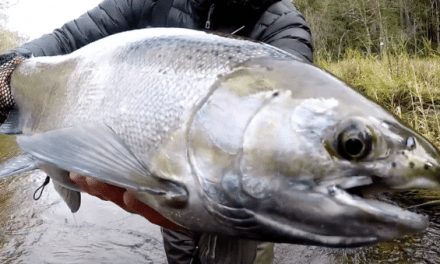 Researchers will experiment with a riverbed bubbler and sound system as part of the ongoing effort to slow the spread of Asian carp throughout the Mississippi River basin.
Researchers will experiment with a riverbed bubbler and sound system as part of the ongoing effort to slow the spread of Asian carp throughout the Mississippi River basin.
European technology originally designed to steer migrating salmon back into main river channels will be tested below Barkley Dam in western Kentucky as an environmentally friendly way to block passage of Asian carp upstream.
The Bio-Acoustic Fish Fence (BAFF) creates a curtain of bubbles, and in conjunction with a powerful sound signal, produces an underwater “wall of sound” designed to deter the passage of fish.
Fish Guidance Systems, LTD, a company based in the United Kingdom, invented the device to herd migrating fish around water intakes and dams in Europe. The company describes the fence as a behavioral barrier that requires less maintenance than a physical barrier, such as a screen or an electrical barrier.
A multi-agency research group chose this company’s technology for the Barkley Dam test. The Nashville District of the U.S. Army Corps of Engineers, U.S. Geological Survey, University of Minnesota, Fish Guidance Systems and the Kentucky Department of Fish and Wildlife Resources are combining funding, technology and staff to construct a research plan that should put an acoustic bubbler system below the dam in fall 2018. Researchers will use an existing telemetry receiver array and other electronic devices to assess the extent of Asian carp movement from the tailwater into Barkley Lake. The existence of the current telemetry array – set up by local Kentucky Fish and Wildlife research staff dedicated to Asian carp – and the large number of Asian carp in the tailwater make Barkley Dam the ideal location for this research.
The invasive Asian carp are a major concern throughout the Mississippi River basin, including the Tennessee River, which forms Kentucky Lake, and the Cumberland River, which forms Lake Barkley. These are two of the largest reservoirs in Kentucky.
The lock systems of Kentucky and Barkley dams are the primary sources of reservoir access for Asian carp, which continue to expand their range throughout the Mississippi and Ohio river basins.
Bio-acoustic fish fences below lock chambers in the Mississippi River basin are untested as an Asian carp deterrent. This requires research to assess the technology’s efficiency at reducing fish movement beyond the barriers. While this technology does not require construction of physical barriers such as fences, challenges remain.
The amount of barge and boat traffic through the lock at Lake Barkley’s dam could create logistical challenges for the U.S. Army Corps of Engineers. Water depths during low-flow periods below the lock chamber will be marginally sufficient to pass barges through. A large volume of sizeable debris coming through the lock chambers during floods could pose problems for the sound system and bubble barrier.
Deployment of the fish barrier may affect a few anglers who fish in parts of the lock canal. Because of the potential for considerable damage to the system, the area between the lock walls immediately downstream of the chamber will be off limits to fishing. However, the area downstream of the bubble curtain located at the end of the short wall along shore will remain open.
Testing will occur over a three-year period. Most likely, officials will remove the barrier system after the test and the entire portion of the lock structure will reopen for fishing.
The research goals include determining the effectiveness of a sound barrier system at restricting or reducing movement of Asian carp through lock chambers; assessing the system’s resiliency; and determining the barrier’s effect on movement of native fish species through lock chambers. Information gathered from this research will be important to future tests at other dams in the Mississippi River and Ohio River basins.
The potential importance of cost-effective, barrier deterrence systems cannot be overstated. There are many river systems leading to ecologically sensitive areas and economically important reservoirs threatened by Asian carp invasions, and time is running short.
Click here to see videos and more information about Asian carp in western Kentucky.
The post Wall of Sound designed to Stop Invasive Carp in Mississippi Basin appeared first on ODU Magazine-North America’s #1 Digital Fishing Magazine.
















